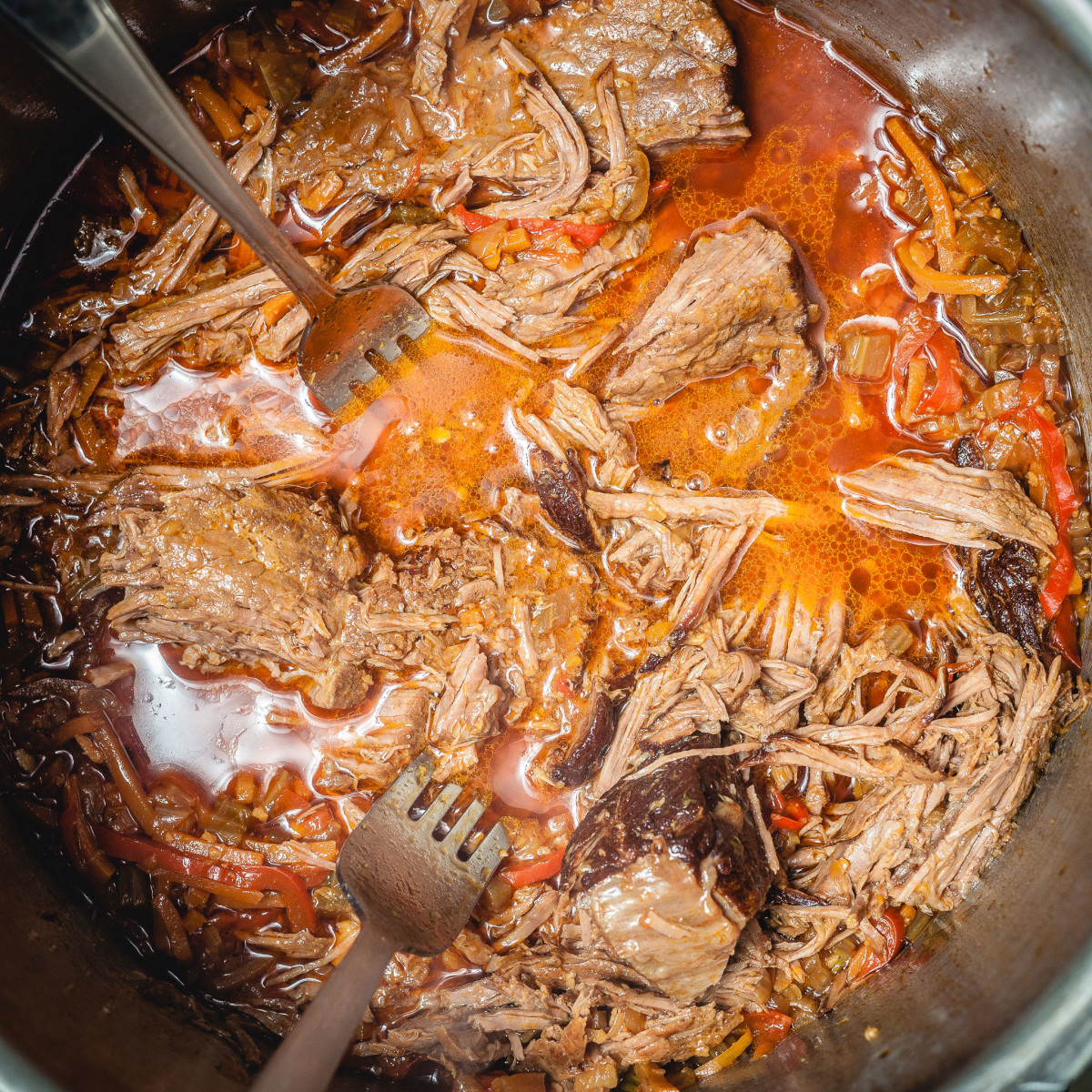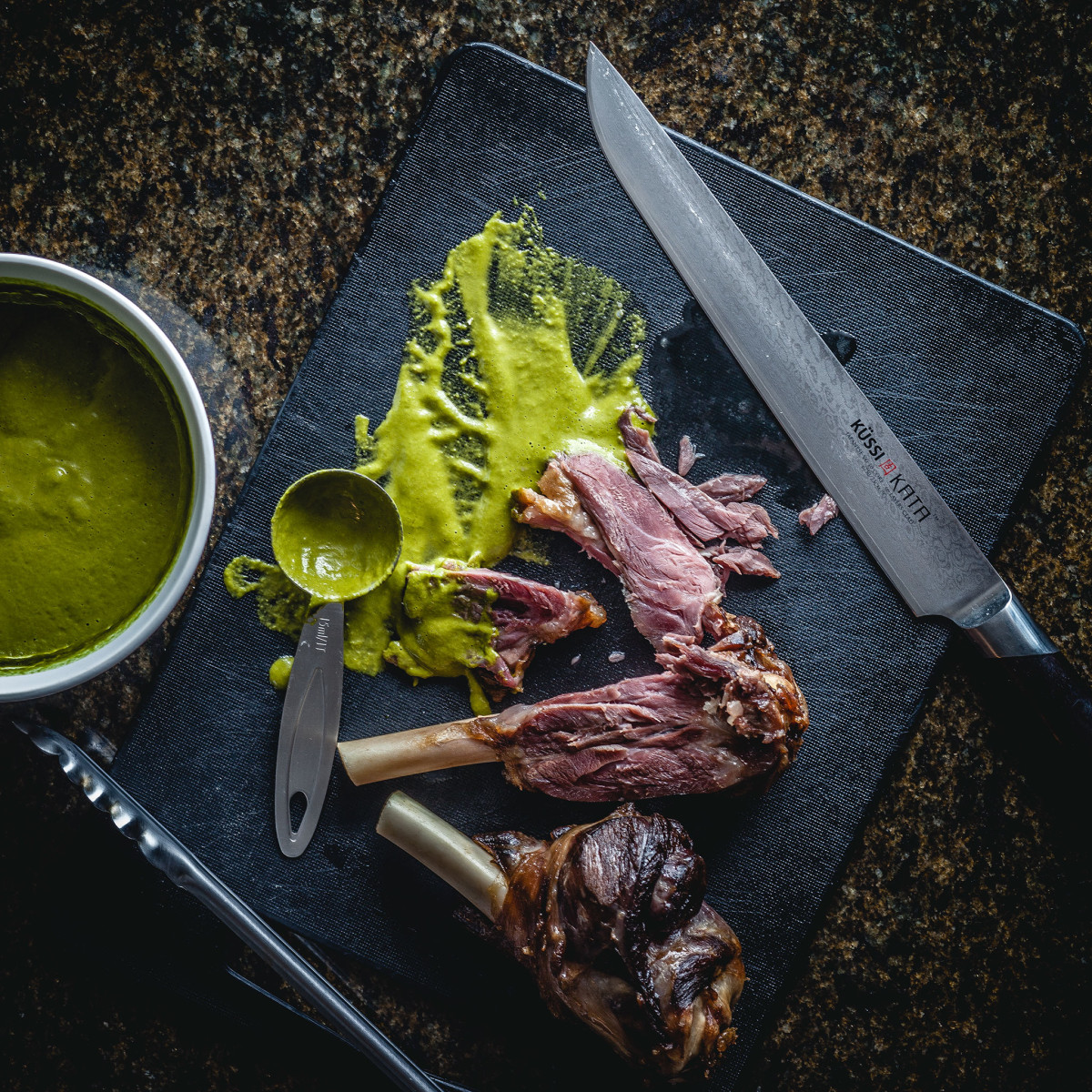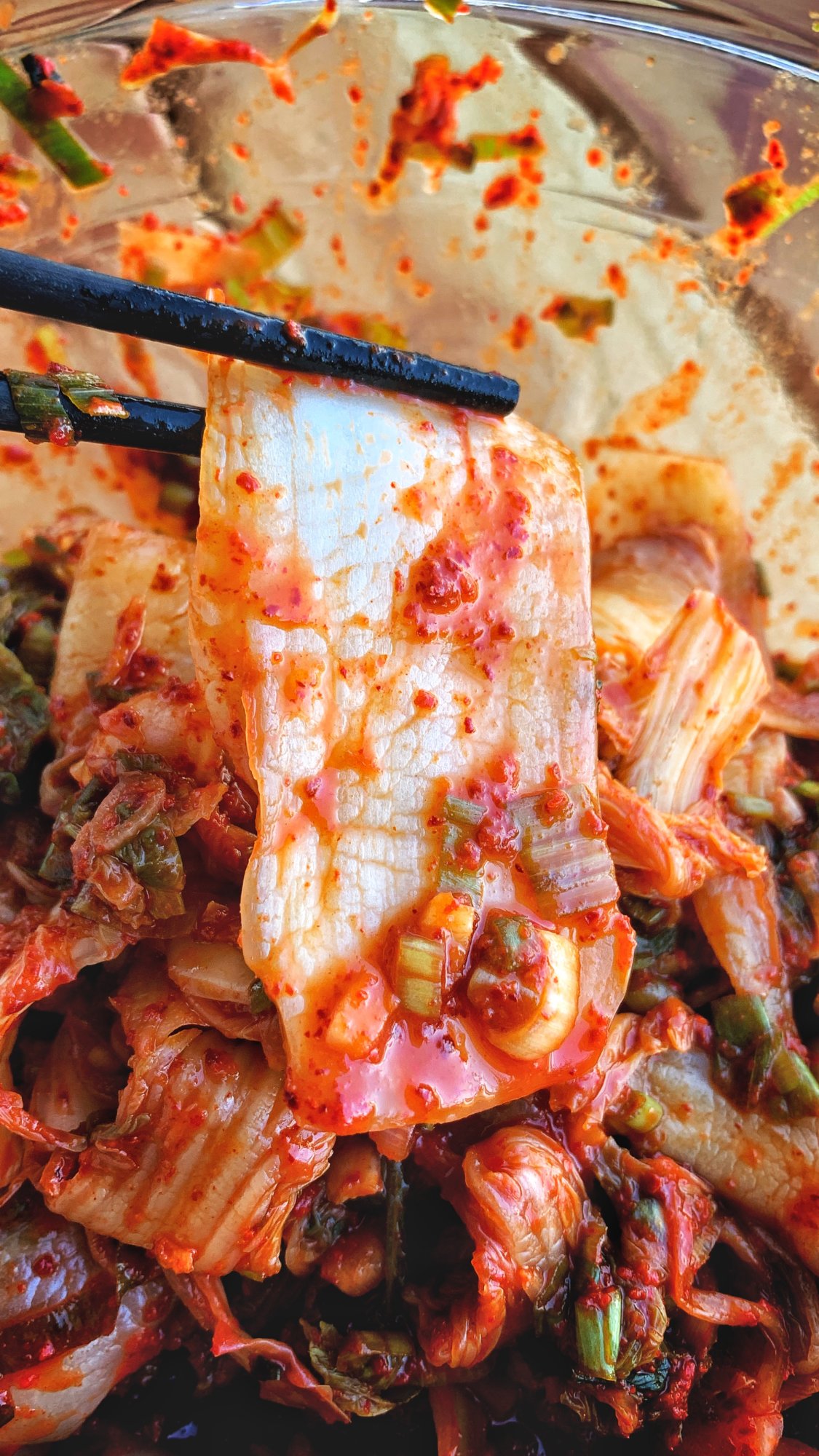Hey guys, time for another easy dry-cured recipe with wonderful flavor and a ton of uses. I can’t wait to get this thing all golden crispy-ready to go with my sunnies. Let me start by saying that pancetta is very similar to bacon. Pancetta is made from the belly of a pig and dry-cured for a few weeks. It isn’t smoked… which quite honestly could be done but I’m not gonna suggest that otherwise, we could get into the whole “is it really pancetta then?” debate and I don’t have the energy. Not tonight.
After some intense Wikipedia research, this is what I learned. You can cure the pork belly flat (like bacon) in which case you’d call it pancetta stesa or you can roll it up… like a roulade in which case you’d call it pancetta arrotolata. In my case, I went with arrotolata but later after dry-cured I decided to unroll it and slice it flat mainly because I don’t have a proper meat slicer and didn’t want to destroy the meat. I’m planning on getting one now that dry curing has become a constant thing in my cooking but until then, my slicer knife will have to do. Anyways, let’s dry cure some pork belly and be done with this.
Ingredients (easy to scale up or down if you have more or less pork belly):
1000g pork belly fat cap on.
30g salt (3%)
2.5g curing salt #2 (0.25%)
20g ground black peppercorns
20g garlic powder
20g lavender
20g fennel seeds
10g fresh thyme
10g fresh rosemary
3g ground juniper berries
1g nutmeg
10g dextrose or sugar
1 dry bay leaf

Why so many ingredients!?
Alright, you can totally cut down the number of things to add to your pork belly before curing. If you wanna go basic, leave everything out except for the curing salt, the salt and obviously the pork belly. You’d still get a pretty delicious product in the end. Now once you start adding other spices and herbs and stuff, the complexity and richness of the flavor will positively increase and it’s hard to turn back. The quantities you add can vary according to your taste and can totally be adjusted so use my recipe as a guide rather than a must-follow-exactly-otherwise-disaster-will-strike. Fennel and lavender are very interesting. I really like that.
Using dry spices and fresh herbs in your cure.
You can use dry herbs too but I’m not a fan. The flavor isn’t quite there. And if using spices, you can toast them in a pan until they smell a bit toasty or use them straight. I like to grind all the dry ingredients in a coffee/spice grinder, including the salt and the curing salt. And then mix in the herbs. Once you have your cure mix, get the meat in the baggie and add the cure. Rub the cure as evenly as possible then roll up that belly and tie into a roulade. Vacuum pack. You can use ziplock bags too.

The 2 steps of dry curing. Salt diffusion and drying.
Before we begin, let me touch on some methodology stuff here. Dry-curing could be one step really. Add salt and hang it to dry but there are technical issues with that approach. As you add the salt, water from the pork belly will be drawn to the surface and drip down carrying most of your cure (salt and spices) with it and end up on the floor, so not a good idea. Therefore at least 2 steps are required. One in which salt is given enough time to be diffused into the pork belly and once the desired salinity has been achieved it is then safe to hang the meat to dry. Any dry-cured product can be achieved this way btw.
A quick note on curing salts.
For safe home curing, I really recommend using them. They keep certain bad bacteria at bay and they’re your best bet against botulism. Some commercially sold cured products don’t use them (and brag about it) because nitrites and nitrates have a bad rep. There’s a big debate out there about that. In the meantime I choose safety. I choose life. Please do use your curing salts, skip this recipe entirely or proceed at your own risk. If you want to read a bit more about this you can check out my previous article on dry cured pork loin. And please stick to the amounts indicated in the packaging which match the amount suggested by this recipe.
Salt diffusion.
Once you add salt (your curing mix) to your pork belly, the process of diffusion begins. Salt will move very slowly through the meat until it’s evenly distributed and the salt concentration is the same everywhere throughout the cut. I like to vacuum seal the meat for this process. Reduces the amount of moisture that’s lost which isn’t a good thing since dry-curing is about wanting to do the opposite thing but makes it easier to get the proper amount of salt into the meat. Less guessing really.
If you can’t vacuum seal, no big deal. Use a ziplock bag and remove as much air as possible. A rule of thumb in terms of how long to leave the meat in the bag is about a week per inch. For arrotolata, I would recommend about 2 weeks. You can flip the bag once a day to help distribute the cure. If you vacuum packed your pork then this step is not really necessary.
Drying.
Once you’re done with the first step, the second step is mainly about patience. You don’t need to rinse the meat before hanging to dry but it helps to speed up the first few days of drying so do it. After you rinse the meat you can pat it dry with paper towels. The amount of time that is required to dry-cure anything is very variable and depends on the weather more than anything else.
I personally like to start the drying step in the fridge by either hanging the meat in the fridge or placing it on a drying rack. It gives the drying process a head start in a very safe environment and after a week or so I can free up space in my fridge and hang the meat in my kitchen away from direct sunlight. Ideally, cool weather with about 60% humidity renders a pretty great cured product but this shouldn’t discourage you at all. You can always hang it in a closet too.

When is this thing done?
Always write down the weight of the meat after the first step. The drying step is done when the meat loses enough weight (water). The target is somewhere around 25%-33% and the amount of time varies considerably to even try to suggest a number. It’s not even a linear thing so it’s impossible to calculate a date based on historical data from the water loss of the previous week for example. Initially, the meat loses water rapidly but soon that rate drops and becomes slower and slower as time goes by. For this pancetta, the drying took about 3 weeks.
Should this thing be eaten raw or cooked?
That’s a good question and after doing some research I realized there’s a big debate out there. Entire forums dedicated to the topic. The short answer would be both. Up to you, cook it, eat it “raw”. Dry cured meat isn’t really raw. It won’t go bad… ever. Once cured you can keep it on your kitchen counter for as long as you want. It will fossilize before anything else happens. It is sold as deli meat just like prosciutto or serrano ham. It’s basically the same thing and I don’t understand why there is so much confusion about the subject. Anyways, thought I’d mention it in case you were wondering.
Am I done writing about this?
yes.

Wanna get more sous-vide cooking guides and cool cooking how-to’s in your mailbox? You know what needs to be done!
We never spam. You should only be getting updates when new content is posted on the site. We also respect your privacy. We don’t share your email address with anyone and you can unsubscribe anytime!





6 comments
Hi Paul, I applaud you for making your own pancetta. It is so much better than most store-bought versions. Your photos look great as usual.
Some thoughts:
Smoked pancetta does exist in Italy and is called pancetta affumicata. If it is just called pancetta it is not smoked, but recipes that do specify pancetta affumicata are quite common.
The main difference apart from the shape between flat and rolled pancetta is that the outer lean meat will dry out in pancetta tesa. In pancetta arrotolata, everything stays tender. When I tried to make it myself however, the inside became kind of icky because it had not dried quickly enough. Now that I think of it, perhaps I should try to dry it for a day or so before rolling it up to avoid that problem.
I do not agree that dried herbs do not have flavor. I use dried thyme to make pancetta all the time and the flavor is definitely there. I even substituted garlic powder for the fresh garlic I used to use, because it mixes better with the other ingredients.
If you just use pork belly and salt, I don’t think the end result could be called pancetta. For that some spices would be required. Some kind of pepper (black or chilli) and garlic are the most common. The main reason why I like my own pancetta better is because of the thyme, nutmeg, and fennel that I add. Lavender sounds original and as far as I know does not exist in Italy.
Thanks, Stefan! You got me thinking about the smoked pancetta now. I mean, I couldn’t find anything online but I couldn’t think of any good reason why it couldn’t be smoked, even cold smoked 🙂 Anyways, I wanted to ask you if smoked pancetta was common enough? seems like the unsmoked version is very standard. Regarding dried herbs, perhaps it’s a matter of source. I really don’t like using them because the flavor is dull but maybe you have access to better quality and I wouldn’t be surprised. I started growing my own herbs at home now and I’m planning on drying them in my dehydrator so I could learn more about using dry herbs in the near future.
Salt and pork alone I’m sure don’t qualify as “official” pancetta, you’re probably right but lavender does exist in Italy 🙂
take care, Stefan! I left a follow-up question about cold smoking btw.
LOL I meant to say lavender pancetta does not exist in Italy. Lavender sure does!
Pancetta affumicata is definitely cold smoked and for several days (!). If it is hot smoked, it is called bacon in Italy 🙂 It is not by far as common as regular pancetta and always stesa. The smoking happens after the drying.
I agree that the flavor of dried herbs is not the same as fresh, but for curing pancetta that doesn’t seem to matter because the flavor that goes into the pancetta (fat soluble) is still there. I don’t use dried thyme for other purposes. This is similar to using wine for cooking: the flavor should be good, but complex aromas will be cooked out anyway so there is no need to use expensive wine.
What is the question in your follow-up comment? I did see your comment but no question?
🙂 Yeah, lavender in general is hard to find in recipes. And I guess I never typed an actual question regarding the cold smoking thing. I was wondering what the difference would be between cold smoking something for 10 minutes and 10 hours for example. Is it the thickness of the pellicule? how “smokey” it smells? My cold smoking test yielded something that was very smokey with a noticeable pretty yellow-orange pellicule and possibly smelled smokier than a 12 hour hot-smoked brisket I made recently (granted, I don’t have a smoker). What am I missing?
Whoah!!! I really wish I could taste this. Wow. I’m glad you’ve hooked up interweb-wise with Stefan. He’s an incredible resource for me.
Stefan is the best! 🙂